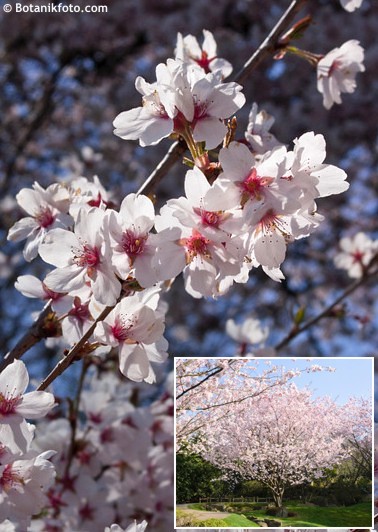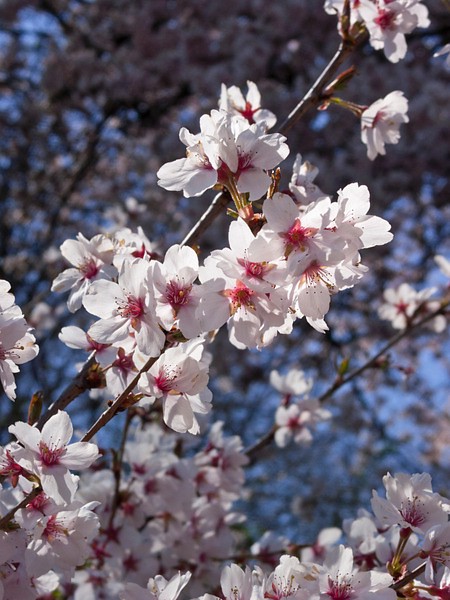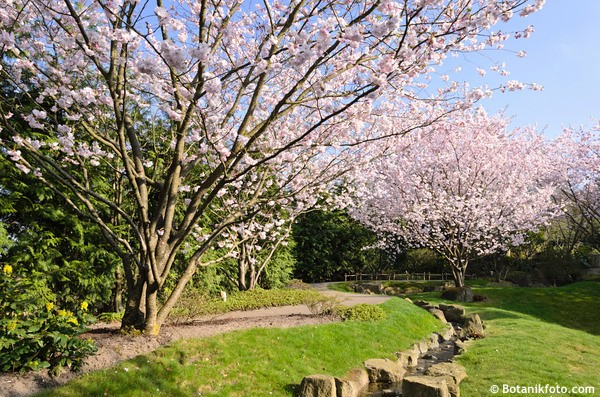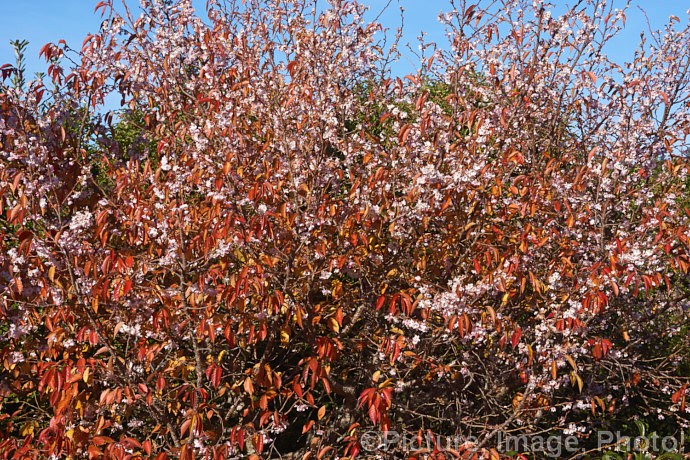Prunus x subhirtella 'AUTUMNALIS' higan cherry


Prunus
The prunus genus contains over 400 species which are useful and beautiful at the same time. There are cherries, plums, peaches or sloes, as well as flowering Japanese cherries, cherry laurels etc. Higan cherry is believed to be a natural hybrid between prunus pendula and prunus incisa. It is a profusely flowering species of Japanese origin.Deciduous leaves are narrowly elliptic, smaller than cherry leaves – about 6-8 cm long, medium green in spring and summer, changing to golden yellow, and possibly a bit of orange and red in acid soil. Give this beautiful tree time to form a decent canopy. It is somewhat flattened, spreading to sides with its thin, slightly arching twigs. Pruning is possible after flowering but is not recommended to often in order to avoid infections common for cherry trees.
Higan cherry is not too picky about soil type but hates compacted, water-logged ground. It will thrive in evenly moist, medium fertile, preferably acidic soil in full sun. It is more tolerant to frost and summer heat than most other cherry trees. It will cope down to -34°C (USDA zone 4).
Last update: 10-02-2006; 17-07-2016
Goods are shipped all over Europe. For Russia and U.K. and for further details please read about SHIPPING OPTIONS HERE.
Are you interested in a serious discount for orders NOV-FEB? Check your options here.
THE PRICES INCLUDE VAT of 15%. For quick conversion you can use 1 CZK = approx. 0.04 EUR
- STANDARD QUALITY - Plants of this group are 1st class quality with number of branches and overall density adequate to their size and age, considering they were container grown.
- DE LUXE QUALITY - This label guarantees a luxurious quality of manually selected plants that, compared to their height and age, are exceptionally dense and beautiful.
- EXTRA - These plants are usually mature and bigger specimens with exceptional overall appearance.
- STANDARD (as described in the plant form) means a tree with a trunk of 190-210 cm and a crown at the top, unless specified differently. The commercial size for trees is their girth measured in the height of 1m from ground.
- HOBBY - These plants are of the same quality as our standard-quality plants but younger and therefore cheaper.
- SHRUB - a woody plant with branches growing bushy from the ground level.
- HALF-STANDARD or MINI-STANDARD - a small tree with shorter trunk, its size is usually specified.
- FEATHERED - These are trees with branches growing already from the base of the trunk and up along the stem.
- GRASSES and PERENNIALS - Sizes given usually read the diameter of the pot or the clump, as specified.
















